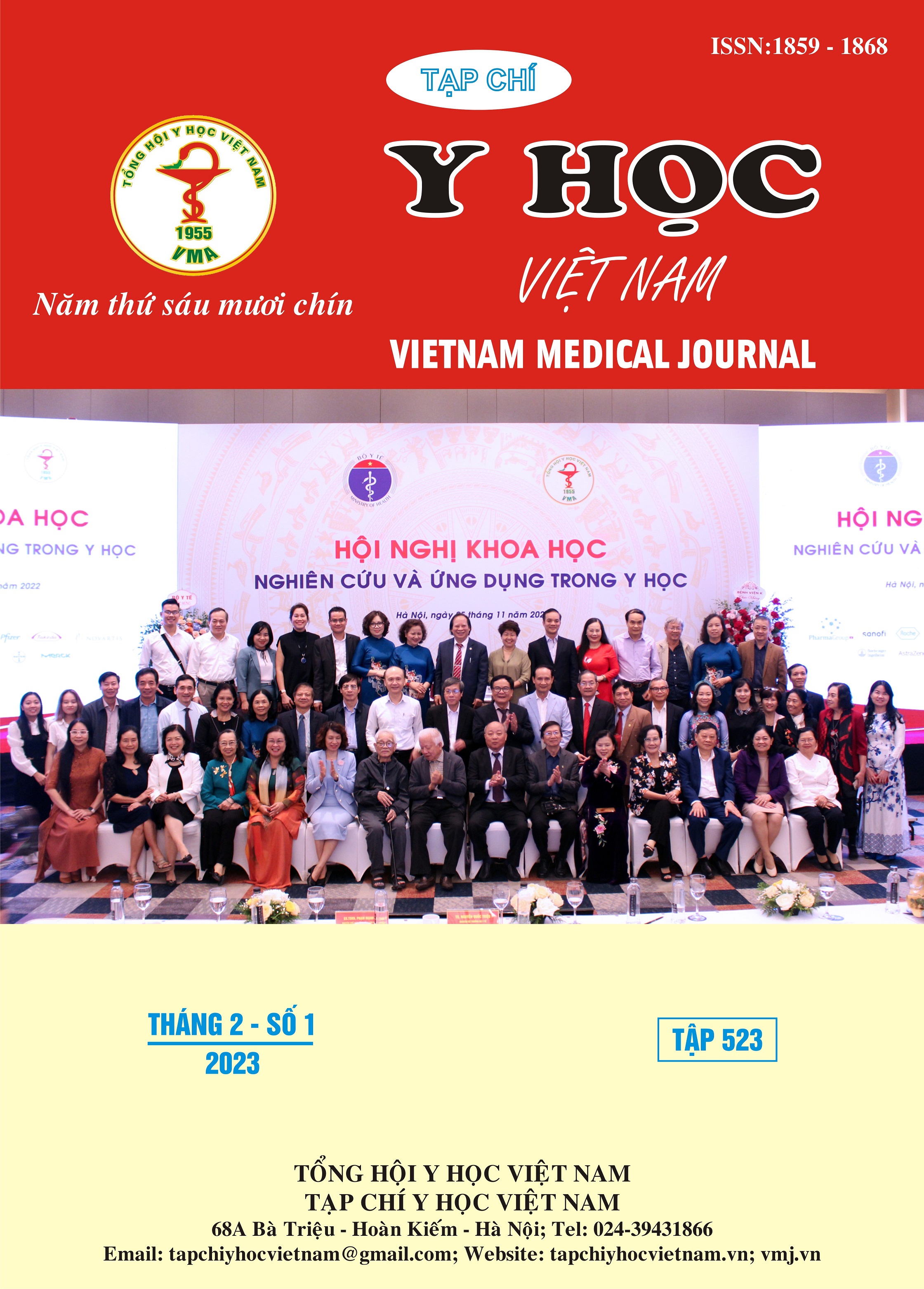CHARACTERISTICS OF ACUTE KIDNEY INJURY IN PATIENTS UNDERGOING PERCUTANEOUS CORONARY INTERVENTION AT THE THAI NGUYEN NATIONAL HOSPITAL
Main Article Content
Abstract
Objective To describe the characteristics of acute kidney injury (AKI) and the association between some factors and acute kidney injury in patient undergoing percutaneous coronary intervention (PCI). Subjects: 127 patients undergoing percutaneous coronary intervention at Thai Nguyen national hospital from September 2021 to September 2022. Method: Cross-sectional description. Result: The average age of the patients was 68.0 ± 10.9 years old, the males was 61.4%. Renal failure 36.2%, diabetes mellitus 28.3%, anemia 29.9%, heart failure 40.9%. The median serum creatinin value post percutaneous coronary intervention (PCI) was 101.1 ± 42.3 µmol/l, 21.3% of patients were received contrast media in volumes exceeding the maximal allowable contrast dose (MACD). 29/127 patients (22.9%) developed acute kidney injury after PCI, AKI stage 1 was 18.9%, AKI stage 2 was 3.9%. 9 patients (7.1%) died during hospitalization. In this study we figured many factors increased risk of AKI in patients undergoing PCI: Diabetes mellitus, renal failure, heart failure, contrast volumn > MACD, ≥ 75 years old. The volumn of contrast was used exceed MACD is the highest risk factor that increased risk of AKI (OR 21.39; 95% CI: 7.46 – 61.28; p < 0.05). AKI was associated with a significantly increased odds of death in hospital (OR 36.95; 95%CI 4.38 – 311.5; p < 0.0001). Conclusion: The rate of acute kidney injury after percutaneous coronary intervention is still high. Diabetes mellutus, heart failure, renal failure, anemia, contrast volumn exceed MACD associated with increased risk of AKI after PCI. AKI was associated with a significantly increased odds of death in hospỉtal.
Article Details
Keywords
acute kidney injury, Contrast-induced acute kidney injury.
References
2. Joe Aoun, et al. (2018), "Maximum allowable contrast dose and prevention of acute kidney injury following cardiovascular procedures", Current opinion in nephrology and hypertension. 27(2), p. 121.
3. Lorenzo Azzalini, et al. (2018), "Incidence of contrast-induced acute kidney injury in a large cohort of all-comers undergoing percutaneous coronary intervention: Comparison of five contrast media", International Journal of Cardiology. 273, pp. 69-73.
4. Wen-hua Li, et al. (2013), "Impact of anemia on contrast-induced nephropathy (CIN) in patients undergoing percutaneous coronary interventions", International Urology and Nephrology. 45(4), pp. 1065-1070.
5. Roxana Mehran, et al. (2004), "A simple risk score for prediction of contrast-induced nephropathy after percutaneous coronary intervention: development and initial validation", Journal of the American College of Cardiology. 44(7), pp. 1393-1399.
6. Charanjit S Rihal, et al. (2002), "Incidence and prognostic importance of acute renal failure after percutaneous coronary intervention", circulation. 105(19), pp. 2259-2264.
7. Thomas T Tsai, et al. (2014), "Contemporary incidence, predictors, and outcomes of acute kidney injury in patients undergoing percutaneous coronary interventions: insights from the NCDR Cath-PCI registry", JACC: Cardiovascular Interventions. 7(1), pp. 1-9.
8. Jin Wi, et al. (2013), "Prediction of contrast‐induced nephropathy with persistent renal dysfunction and adverse long‐term outcomes in patients with acute myocardial infarction using the Mehran Risk Score", Clinical cardiology. 36(1), pp. 46-53.


